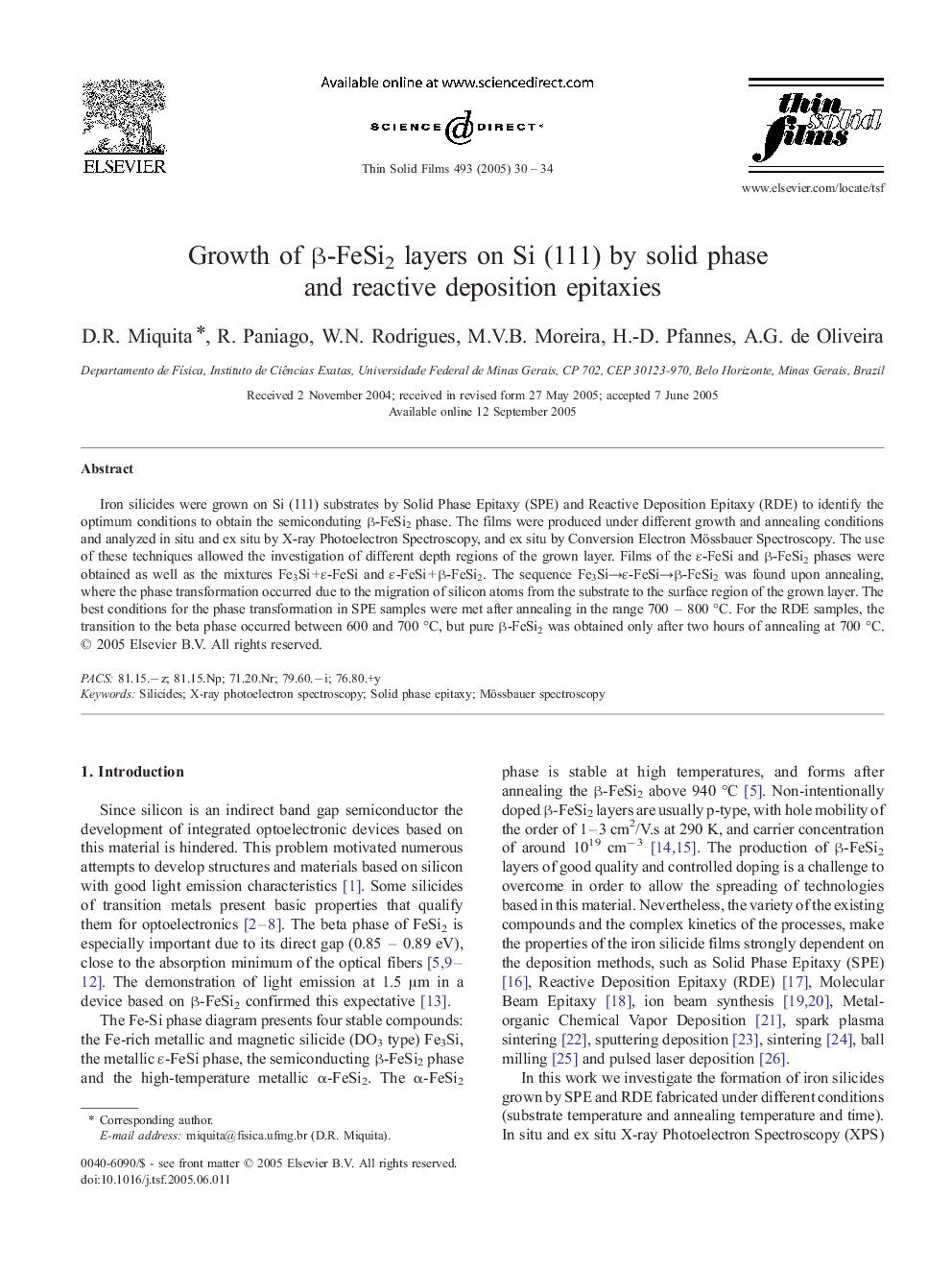| Article ID | Journal | Published Year | Pages | File Type |
|---|---|---|---|---|
| 9812058 | Thin Solid Films | 2005 | 5 Pages |
Abstract
Iron silicides were grown on Si (111) substrates by Solid Phase Epitaxy (SPE) and Reactive Deposition Epitaxy (RDE) to identify the optimum conditions to obtain the semiconduting β-FeSi2 phase. The films were produced under different growth and annealing conditions and analyzed in situ and ex situ by X-ray Photoelectron Spectroscopy, and ex situ by Conversion Electron Mössbauer Spectroscopy. The use of these techniques allowed the investigation of different depth regions of the grown layer. Films of the É-FeSi and β-FeSi2 phases were obtained as well as the mixtures Fe3Si + É-FeSi and É-FeSi + β-FeSi2. The sequence Fe3SiâÉ-FeSiâβ-FeSi2 was found upon annealing, where the phase transformation occurred due to the migration of silicon atoms from the substrate to the surface region of the grown layer. The best conditions for the phase transformation in SPE samples were met after annealing in the range 700 - 800 °C. For the RDE samples, the transition to the beta phase occurred between 600 and 700 °C, but pure β-FeSi2 was obtained only after two hours of annealing at 700 °C.
Keywords
Related Topics
Physical Sciences and Engineering
Materials Science
Nanotechnology
Authors
D.R. Miquita, R. Paniago, W.N. Rodrigues, M.V.B. Moreira, H.-D. Pfannes, A.G. de Oliveira,
